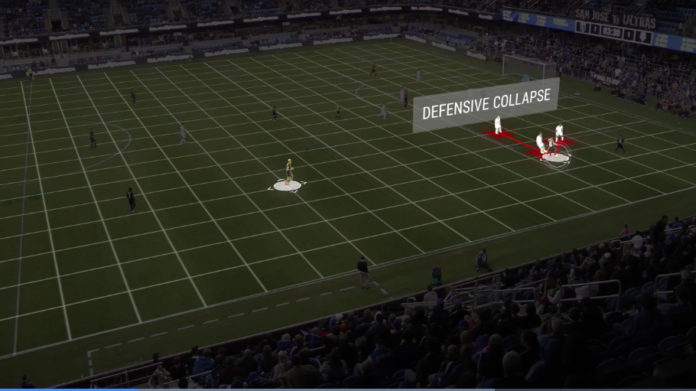A quarterback steps into a sophisticated rig, dons a headset and is immersed in the gleaming daylight of the field. The center snaps the ball and the action stops. The QB can tilt his head and see where his receivers are on their routes, what the coverage looks like, how his linemen are holding up. Then the action starts again and he can make a more informed decision. These drills are run play by play, again and again, increasing speed until the QBs reactions are second nature.
This was the future of sports, and the future is now. Thanks to a sophisticated combination of VR, AR and machine learning, coaches are learning how to push players limits based on data and theories proven over time.
Sports Analysis and Machine Learning
Fans underestimate the importance of analysis, but coaches rely on analysis and are paid for their ability to do it well. If we understood more about the fundamentals of the game, the level of play would improve across the board.
Humans have a high margin for error when we’re trying to manually analyze data sets. We make incorrect guesses, or have a tendency to look at data in a vacuum. One of the benefits of technology across the board is removing that variable, but improving precision is also important.

If a basketball coach knew which players statistically passed the ball with the highest rates of success, they could begin building plays around those key people. They could use heatmaps and statistics on shooting and points to teach players how and where to move on the court. In fact, the NFL already offers fans this technology thanks to a partnership with Sportsradar. Football coaches might start arranging routes based on a player’s optimal movement and speed. There are untold possibilities in this space.
AR and Understanding
One of the powerful ways commentary adds to enjoyment of the game is by improving our understanding of it. The great Vin Scully used downtime in baseball to talk about a player’s history and the fundamental mechanics that made him great. He would provide more color and detail, giving the fans a better sense of who they were watching. AR already offers a more customizable version of this experience with statistical analysis and heads up displays on players.
[youtube https://www.youtube.com/watch?v=wapnM0XXRp8&w=560&h=315]
AR takes that fundamental commentary approach to the next level for coaches. On the sidelines, coaches have a good view of the game, but may lack important real-time data that might have taken weeks to gather watching footage. An AR headset would give the coach a display to aid his understanding of what players are doing during a particular play, and how to direct them in the future. Adjusting faster to what the opponent is doing will be the key to winning at the professional level in sports. AR promises coaches the opportunity see the game from that statistical perspective.
VR and Coaching
We can already see how VR can impact coaching for the better. Even games designed to be fun, like Thrill of the Fight, can teach us practical concepts about the sport we are participating in. Baseball simulation could teach batters how to swing for the stands, or help pitchers deal with the anxiety of stacked bases. Stanford already uses VR to teach its football team how to react to situations they’ll encounter on the field.
That’s not even touching upon the fitness potential, which can improve stamina and endurance in an environment that is stimulating and new. We have seen how an exercise bike or an omni treadmill can create an immersive experience in VR. That immersion helps us push past our plateaus, and innovative scenarios force us into a full body workout.
VR is more than just a cool way to view a professional game, it can be an immersive way to experience iconic plays and learn more about the game. VR practice apps would allow the casual fan to learn more about the game, and about how players respond on the field. That has implications at the national level, where younger talent may get more involved and become more knowledgeable in the game. Soccer is one sport that could use a boost in US-born talent, which VR could help with at the high school and college levels.
Challenges and Final Thoughts
The biggest challenge moving forward is convincing the coach. Coaches have a lot to handle these days, and selling someone on a system to crunch data is a no brainer when that’s what they do for a living. Today’s systems can finally operate at their level, at a speed that improves their coaching.
If adoption on the fan side appears slow, it’s because consumers need time to catch up. More mobile headsets mean the price point for VR experiences is far lower, and these new apps are seeing wider adoption on mobile as a result. Both the NBA and MLB have released AR applications. It’s only a matter of time before fans feel the true benefits of VR, but make no mistake: the level of professional play is rising year over year thanks to machine learning, AR and VR applications.


